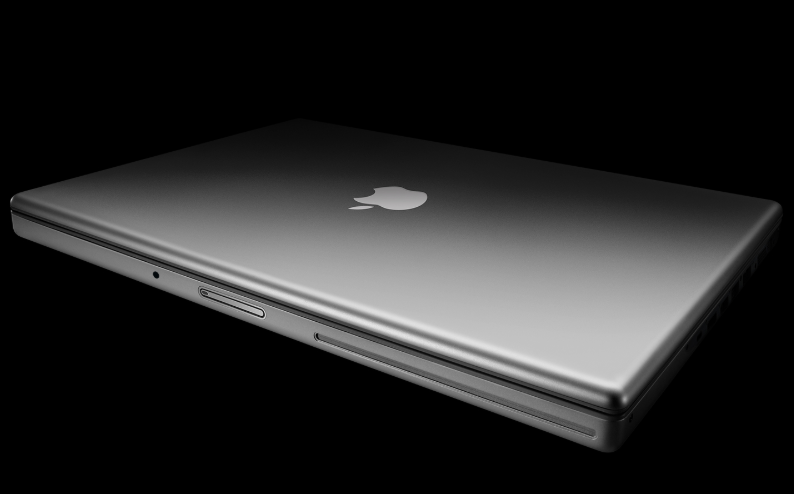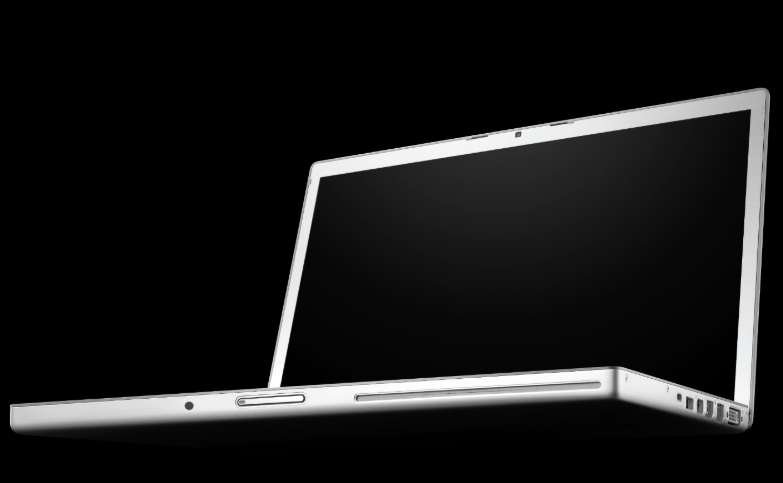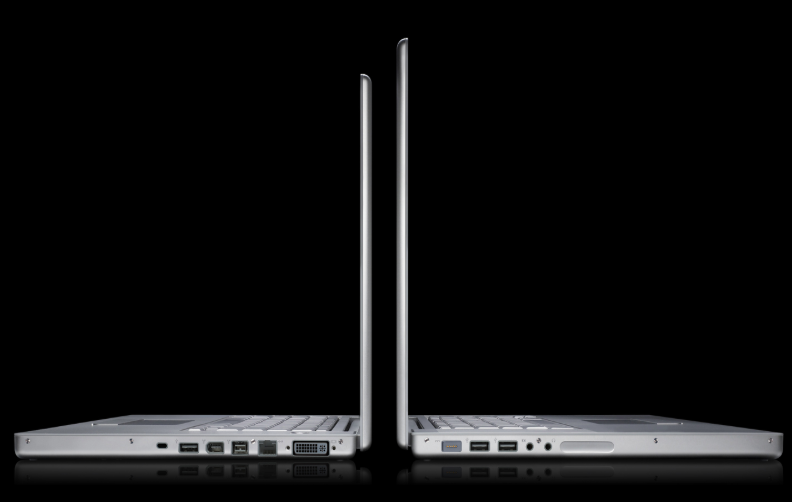On January 10, 2006, Steve Jobs unveiled the new fifteen-inch MacBook Pro at the MacWorld conference. At the time, it was the thinnest, lightest, and above all the fastest Apple laptop ever. While the MacBook Pro was beaten two years later by the MacBook Air in terms of size and lightness, performance and speed – its main distinguishing marks – remained.
A few months after the first, fifteen-inch version, a seventeen-inch model was also announced. The computer bore the undeniable characteristics of its predecessor, the PowerBook G4, but instead of the PowerPC G4 chip, it was powered by an Intel Core processor. In terms of weight, the first MacBook Pro was the same as the PowerBook, but it was thinner. New was the built-in iSight camera and MagSafe connector for safer power supply. The difference was also in the operation of the optical drive, which, as part of the thinning, ran much slower than the drive of the PowerBook G4, and was not capable of writing to double-layer DVDs.
One of the most discussed innovations in the MacBook Pro at the time was the change in the form of switching to Intel processors. This was a very important step for Apple, which the company made more than clear by changing the name from PowerBook, used since 1991, to MacBook. But there were a number of opponents of this change - they blamed Jobs for the lack of respect for Cupertino's history. But Apple made sure that the MacBook did not disappoint anyone. The machines that went on sale even featured faster CPUs (1,83 GHz instead of 1,67 GHz for the base model, 2 GHz instead of 1,83 GHz for the high-end model) than originally announced, while keeping the same price . The performance of the new MacBook was up to five times higher than its predecessor.
We also mentioned the MagSafe connector at the beginning of the article. Although it has its detractors, it is considered by many to be one of the best things Apple has ever come up with. One of its biggest advantages was the safety it provided to the computer: if someone messed with the connected cable, the connector easily disconnected, so the laptop was not knocked to the ground.
However, Apple did not rest on its laurels and gradually improved its MacBooks. In their second generation, he introduced a unibody construction – that is, from a single piece of aluminum. In this form, the thirteen-inch and fifteen-inch variants first came into the world in October 2008, and in early 2009, customers also received the seventeen-inch unibody MacBook. Apple said goodbye to the largest version of the MacBook in 2012, when it also launched a new, fifteen-inch MacBook Pro - with a thinner body and a Retina display. The thirteen-inch variant saw the light of day in October 2012.
Have you owned any of the previous versions of the MacBook Pro? How satisfied were you with her? And what do you think of the current line?
Source: Cult of Mac



I don't think today's Macbooks are what they used to be. By removing the SD card slot, HDMI and USB-A, the "Pro" designation loses its meaning for me. I'm afraid that when my 2015 model goes away, I'll be forced to switch to another brand as a photographer and occasional videographer. I don't want to carry around a bunch of reducers if I want to upload photos on the train or at photo events. I'm sorry for what they did to that laptop..
Today's MacBooks are much less practical than earlier models. No rear slots, small HDD and overpriced. And Cook is not surprised that Mac sales are falling.
I own both versions For 2015 and 2016, I got used to the lack of ports quite quickly. What doesn't suit me is that the old keyboard was top and the trackpad might not be in the new model, so the giant platoon dishonorably moves something with the palm of your hand. And the biggest piece of crap that the gentlemen from Apple invented is the headphone output on the right, although I most often use Beats pro, which have the option of connecting the cable to the right, so I have it plugged in on the left, because I tilt the right headphone to listen. All professional devices have an output on the left, and the vast majority of headphones have a cable on the left, if it does not lead to both. But on the contrary, the best thing that the new mac has is Touch ID. Logging in with a password every now and then was killing me. And Toch Bar, I can play the keyboard shit in dj alications and don't even have a dj controller.
The current Macbook Pro is a tragedy. The legend ended in 2011 when they shut down the 17″MBP, then it was all downhill. The first Retinas Mid 2012 were still worth something thanks to the early adoption of Ivy Bridge and thus a decent price/performance ratio.
But the current 2019 is a piece of junk – with the i9, it has thermal throttling, so that it has to be underclocked from 2,9GHz to 2,2GHz under load... then what on earth is the processor there for? +10k compared to the i7, for about 3 seconds after which it cools down, but Turbo Boost to 4,8 never ever — so it pays off. +12k for 32GB RAM. 32GB should be the absolute standard for a 100k computer these days. Mainly because they invent stupid things like TouchWhateverBars, (because programmers don't use function keys at all, do they), and other color bars and similar nonsense. Today, the last MBP worth anything is the Retina 2015. It's a shame that it got an R9 M370X GPU and not a GTX 960M.